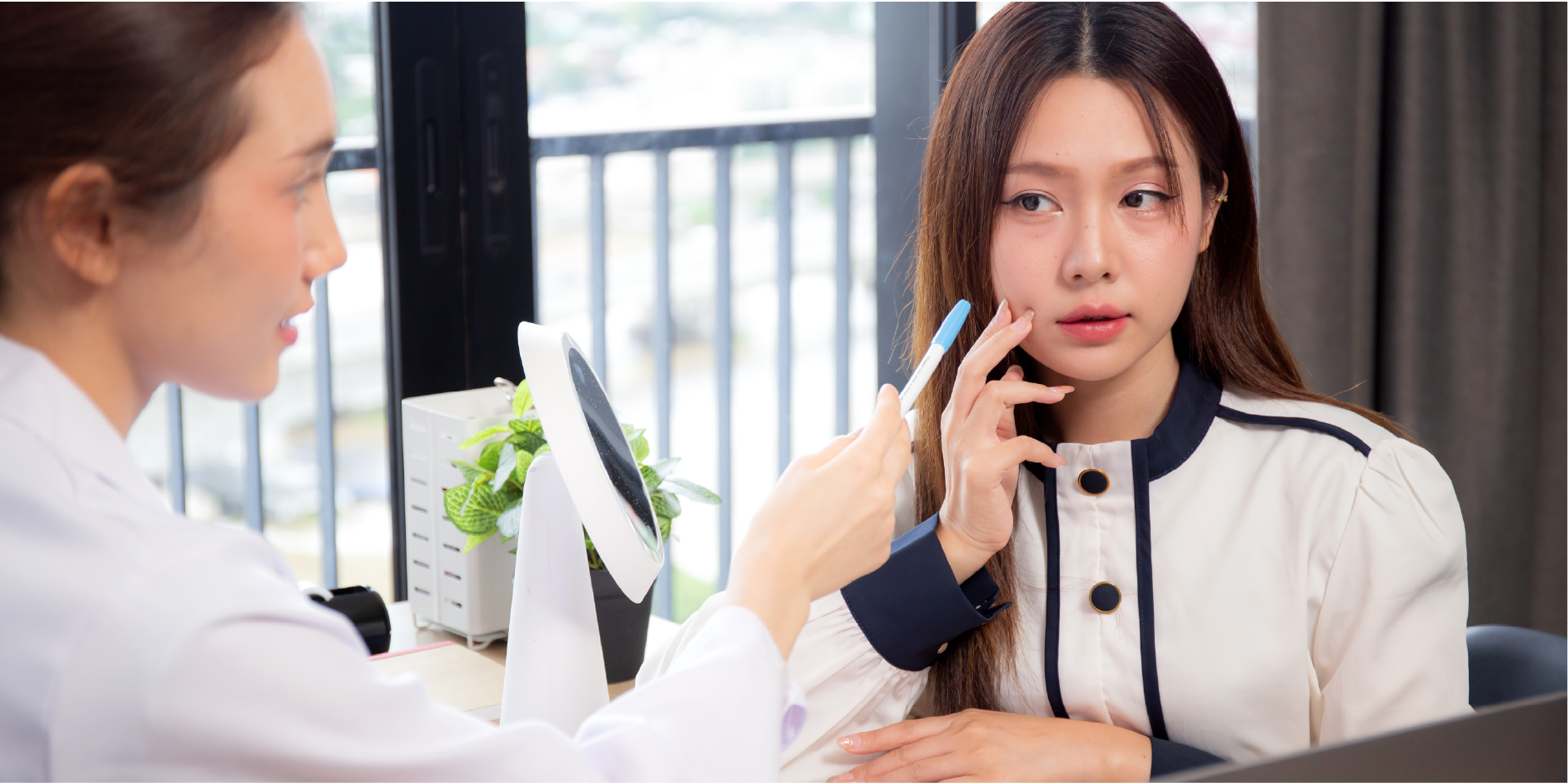Content:
History
Content on this page:
History
Physical Examination
Content on this page:
History
Physical Examination
History
History taking in acne involves the history of past treatments.
However, in most cases, there is no need to look for an underlying cause, which
may be found in patients >20 years old and in resistant cases.
Contributing
factors include:
- Medications
- Corticosteroids, anabolic steroids, Lithium, some oral contraceptives (OC), retinoids, etc
- Androgen
excess
- Signs of androgen excess: Precocious puberty, hirsutism, irregular menstruation, androgenic alopecia
- Causes of androgen excess: Polycystic ovary disease or adrenal, ovarian, or pituitary tumor
- Pathogenesis: Androgen excess causes abnormal epithelial desquamation and obstruction of follicles, the latter secondary to sebum production forming open and closed comedones
- C acnes proliferates due to sebum and causes inflammation around pilosebaceous unit manifested as papules, pustules, nodules, and cysts
- Mechanical
- Physical obstruction: Comedogenic cosmetics, hats, head bands, mask-related acne (maskne), etc
-
Other factors
- Resistant Cutibacterium sp and dysbiosis within the microbiome of the pilosebaceous follicle
- Innate and cellular immune responses, genetic predisposition, endocrine disorders (eg Cushing syndrome, androgen-secreting tumors, obesity)
- Consumption of westernized diet, intake of skim milk, chocolate, stress, smoking, poor quality of sleep, air pollution
Physical Examination
Diagnosis
is usually confirmed based on the morphology of the lesions and their site of
distribution.
 Acne Vulgaris_Intial Assesment
Acne Vulgaris_Intial Assesment